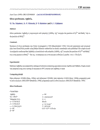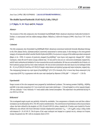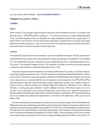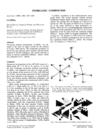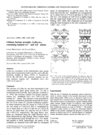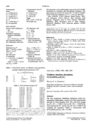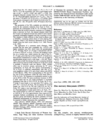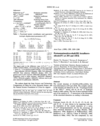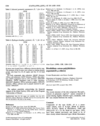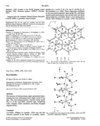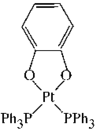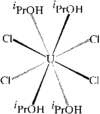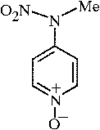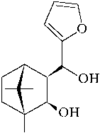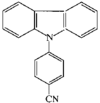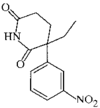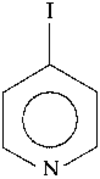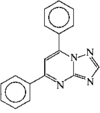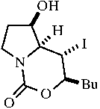issue contents
August 1999 issue

Cover illustration: [Cu2{1,4-bis[(3-methyl-2-pyridyl)amino]phthalazine-H}(N3)3] at 40 K, see Goeta et al., pages 1243-1246. Displacement ellipsoids are shown at the 80% probability level.
cif-access (inorganic compounds)
Download citation


Download citation


Silver perrhenate is isostructural with scheelite, CaWO4. The Ag+ cation occupies the Ca2+ position and ReO4− lies in the WO42− position.
Download citation


Download citation


The structure of the title compound, also formulated as Ca2Al(OH)6Br.2H2O, dicalcium aluminium hydroxide bromide dihydrate, is isostructural with the iodide analogue [Rapin, Walcarius, Lefevre & François (1999). Acta Cryst. C55. In the press].
Download citation


Download citation


The title new tetragonal nickel arsenate is best formulated as Ni0.5-xNi4As3O12-2x(OH)2x (x = 0.15) and corresponds to a hydrated form of Ni4.5As3O12. A unique feature of the structure is a partially filled dodecahedral Ni site with 4 symmetry and long Ni—O bonds [2.300(2) (× 4) and 2.667(2)Å (× 4)].
cif-access (metal-organic compounds)
Download citation


Download citation


The space group of bis(N-ethyl-N-isopropyldithiocarbamato)lead(II), which has been reported as Cc [Trindade et al. (1997). J. Mater. Chem. 7, 1011–1016], is corrected to C2/c. In this setting, the Pb atom lies on a twofold axis which relates one dithiocarbamate group to the other.
Download citation


Download citation


A redetermination of the μ-bromo-(tetramethylethylenediamine-N,N')lithium dimer in a unit cell which has one third the volume of the original determination and which shows no superlattice structuring gives a well ordered solution.
Download citation


Download citation


The Pt atom is four-coordinated by two phosphine P atoms and two I atoms and has a distorted square-planar geometry. The Pt—I distances are 2.6570(3) and 2.6591(3)Å, while the Pt—P distances are 2.2262(12) and 2.2347(11)Å.
Download citation


Download citation


The crystal structure for the title compound was determined at 213 K. The molecule consists of a ferrocene tethered to a carborane through a methylhydroxy bridge which is disordered between two sites.
cif-access (organic compounds)
Download citation


Download citation


In the structure of the title compound, the triazine ring is planar, and the terminal amino group and one ring N atom form hydrogen bonds with an N—H⋯N distance of 2.251 Å, to give dimers.
Download citation


Download citation


The structures of the title compounds show that these isomers present some specific differences in (i) the orientation of the propargyl group with respect to the tetrazole ring, and (ii) the bond distances and angles of the tetrazole rings.
Download citation


Download citation


The structure consists of two indole systems and a methylphenyl ring. The phenyl and two indole rings adopt planar conformations. The packing of the molecules in the unit cell is influenced by the presence of N—H⋯π and C—H⋯π(Cg) interactions (Cg represents the centroids of the five- and six-membered rings).
Download citation


Download citation


The title compound was prepared by the reaction of N,N'-diformylhydrazine and p-phenylenediamine. The X-ray analysis revealed that there is a hydrogen-bond chain composed of water molecules and 1,4-bis(4H-1,2,4-triazol-4-yl)benzene molecules in the crystal. The dihedral angle between the 1,2,4-triazole and substituted-benzene rings is 34.2(2)°.
Download citation


Download citation


A low-temperature structure redetermination of the strong triboluminescent compound N-acetylanthranylic acid is described. The molecule is not planar and forms chains in the crystal which are connected by hydrogen bonds of average strength.
Download citation


Download citation


In the title compound, the substituents of the disubstituted γ-lactone are in a trans (synclinal) relationship and the heterocyclic ring adopts an envelope conformation. The conformation of the allylic and aroyl groups is elucidated.
Download citation


Download citation


Crystals of dl-2,4-bis(phenylthio)pentan-3-one, C17H18OS2, are orthorhombic (Iba2). Despite cell parameters that appear orthorhombic, crystals of dl-2,4-bis(2,6-dimethylphenylthio)pentan-3-one, C21H26OS2, are monoclinic (P21/n) and refine as two twinned components (57/43%) that mimic an orthorhombic lattice.
Download citation


Download citation


In the title compounds, C16H19Cl2N3O3 (R1 = H, R2 = COCHMe2), (I), and C20H25Cl2N3O4 (R1 = R2 = COOCHMe2), (II), the imidazolidine rings adopt half-chair conformations. Compound (I) exists in the imidazolidine form. The dihedral angles between the phenyl and imidazolidine rings are 80.95(6)° for (I), and 66.7(2) and 67.5(2)° for (II). In (I), the glide-related molecules are involved in N—H⋯N intermolecular hydrogen bonds.
Download citation


Download citation


In C10H11Cl2N3O (R1 = H, R2 = CH2OH), (I), and C22H29Cl2- N3O4 (R1 = COCHMe2, R2 = CH2OCOCHMe2), (II), the bonds connecting the phenyl and imidazolidine rings are shorter than that observed in clonidine, indicating increased double-bond character. The imidazolidine rings adopt a half-chair conformation in both structures and the dihedral angles between the imidazolidine and phenyl rings are 86.97(7) and 66.32(6)° in (I), and 62.4(1)° in (II).
Download citation


Download citation


The dimeric title compound was isolated from a samarium-io- dide-mediated radical-cascade sequence of methylenecyclo- propyl ketone. The molecule lies about an inversion centre and the X-ray analysis established the stereochemistry.
Download citation


Download citation


The title compound was synthesized from (+)-camphor. The absolute configuration was determined using the known configuration of (+)-camphor.
Download citation


Download citation


The structure of Kemp's acid, cis,cis-1,3,5-cyclohexane-1,3,5-tricarboxylic acid, studied previously by Rebek et al. [J. Am. Chem. Soc. (1985), 107, 7476–7481] and by Chan et al. [J. Crystallogr. Spectrosc. Res. (1991), 21, 297–308] at room temperature, has been redetermined at 120K.
Download citation


Download citation


The title compound exists as the trans isomer. The dihedral nobreak angle between the phenyl and quinoline rings is 1.9(1)° and the N=N bond distance is 1.249(3)Å. In the solid, intermolecular O—H⋯N hydrogen bonds [2.826 (3) Å and 138°] link the molecules about inversion centres to form dimers.
inorganic compounds
Download citation


Download citation


Cs3NbSe4 crystallises as a K3VS4 type and is isotypic with previously reported K and Rb analogues. The crystal structure is based on discrete tetrahedral [NbSe4]3− anions, which are connected via Cs+ cations.
Download citation


Download citation


Li4Ba3As4 (Immm) is isostructural with Li4Sr3Sb4 and Li4Ba3Sb4. It contains two anionic moieties, namely As24− dumbbells and As3−, and consists of planes of BaAs6 octahedra separated by corrugated sheets of Li and Ba atoms.
Download citation


Download citation


The title compound, trithallium trititanium oxide tris(phosphate) diphosphate, is built up from a three-dimensional polyhedral network of TiO6, PO4 and P2O7 units. It is isostructural with M3Ti3O(PO4)3(P2O7) (M = K, Rb).
Download citation


Download citation


Zinc mercury tetrathiocyanate consists of slightly flattened ZnN4 and HgS4 tetrahedra linked by –S=C=N– bridges to form infinite three–dimensional –Hg—S=C=N—Zn– networks.
Download citation


Download citation


The crystal structure of [Co(NO2)(NH3)5](SiF6) has been determined at 293 and 150K. The complex cations in the structure are linked by N—H⋯F hydrogen bonds to the (SiF6)2− anions and by N—H⋯O hydrogen bonds to other cations. The role of these hydrogen bonds and of the repulsive O⋯F interactions in the anisotropy of the structural distortion on cooling is discussed.
Download citation


Download citation


The crystal structure of the title compound consists of polymeric chains of corner-sharing AgCl4 tetrahedra, with Rb+ ions situated between the chains.
Download citation


Download citation


The non-centrosymmetric structure of tridysprosium copper germanium heptaselenide (La3CuSiS7 structure type) comprises CuSe3 triangles, GeSe4 tetrahedra, and DySe8 bicapped trigonal prisms.
metal-organic compounds
Download citation


Download citation


Download citation


Download citation


Download citation


Download citation


Download citation


Download citation


Download citation


Download citation


Download citation


Download citation


Download citation


Download citation


Download citation


Download citation


Download citation


Download citation


Download citation


Download citation


Download citation


Download citation


Download citation


Download citation


Download citation


Download citation


Download citation


Download citation


Download citation


Download citation


Download citation


Download citation


Download citation


Download citation


Download citation


Download citation


Download citation


Download citation


Download citation


Download citation


Download citation


Download citation


Download citation


Download citation


Download citation


Download citation


Download citation


Download citation


Download citation


Download citation


Download citation


Download citation


Download citation


Download citation


Download citation


Download citation


Download citation


Download citation


Download citation


Download citation


Download citation


Download citation


Download citation


Download citation


organic compounds
Download citation


Download citation


Download citation


Download citation


Download citation


Download citation


Download citation


Download citation


Download citation


Download citation


Download citation


Download citation


Download citation


Download citation


Download citation


Download citation


Download citation


Download citation


Download citation


Download citation


Download citation


Download citation


Download citation


Download citation


Download citation


Download citation


Download citation


Download citation


Download citation


Download citation


Download citation


Download citation


Download citation


Download citation


Download citation


Download citation


Download citation


Download citation


Download citation


Download citation


Download citation


Download citation


Download citation


Download citation


Download citation


Download citation


Download citation


Download citation


Download citation


Download citation


Download citation


Download citation


Download citation


Download citation


Download citation


Download citation


Download citation


Download citation


Download citation


Download citation


Download citation


Download citation


Download citation


Download citation


Download citation


Download citation


Download citation


Download citation


Download citation


Download citation


Download citation


Download citation


Download citation


Download citation


Download citation


Download citation


Download citation


Download citation


Download citation


Download citation




 journal menu
journal menu











